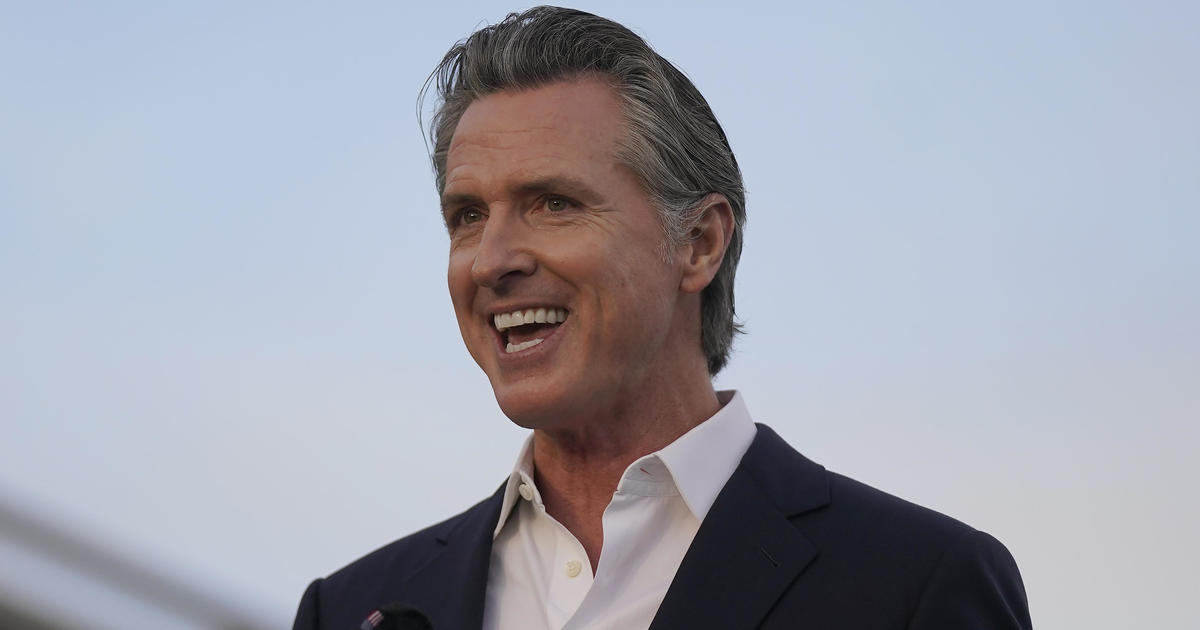Newsom, Lawmakers Agree On How To Close $54 Billion Budget Deficit
SACRAMENTO (CBS / AP) — California Gov. Gavin Newsom and the Democratic state Legislature have agreed to a state spending plan that avoids billions of dollars in permanent cuts to public schools and health care programs but imposes pay cuts to state workers and other programs to cover an estimated $54.3 billion budget deficit brought on by the coronavirus pandemic.
The agreement announced Monday does not include Newsom's proposed permanent cuts to public schools and health care programs, which would have made fewer low-income older adults eligible for government funded health insurance and eliminated programs aimed at keeping people out of nursing homes.
Instead, the state will delay about $12 billion in payments to public schools to future budget years. This gives school districts the authority to go ahead and spend the money — either by borrowing or pulling from their reserves — and the state will pay them back later.
Plus, schools will get $4.4 billion in federal funding to help make help students who are learning to speak English or are low-income or in the foster system. They will also get an extra $1.1 billion in federal money to help with reopening in the fall.
The agreement essentially keeps public school funding at the same level it was in the previous year. By law, this would allow districts to lay off teachers and other staff to balance their budgets. But the agreement includes language protecting teachers and some other school employees from layoffs for the next year.
"School districts should be feeling a major sigh of relief in avoiding what was going to be the largest cut to public schools ever in a single year," said Kevin Gordon, a lobbyist who represents many of the state's public school districts.
The deal avoids cuts to health care and other social services programs for one year. But it gives Newsom the authority suspend some of those programs on July 1, 2021, if the state's revenues have not improved.
The Legislature agreed to Newsom's proposed $2.8 billion worth of pay cuts to state workers. Some bargaining units have already agreed to furloughs, or unpaid days off. But the agreement announced Monday empowers Newsom to suspend scheduled pay raises and impose up to two furlough days per month to any public union that does not have a collectively bargained agreement in place by July 1.
Details of the budget agreement were not immediately released, but were confirmed by sources with knowledge of the deal who were not authorized to speak publicly about it.
A joint statement from Newsom, Senate President Pro Tempore Toni Atkins and Assembly Speaker Anthony Rendon says the budget agreement "protects core services — education, health care, social safety net and emergency preparedness and response."
But the spending plan is likely to change in August, once state officials have a better idea how much money they will have to spend. State officials moved the state's tax filing deadline from April 15 to July 15 this year because of the coronavirus, making it hard to predict how much money the state will have.
"This budget required some tough decisions and more work remains ahead," the statement said. "But they were necessary steps for keeping California on firm fiscal footing while we continue to meet the COVID-19 challenge."
In January, California leaders had been preparing for a multi-billion dollar budget surplus. But that changed in March when Newsom issued a statewide stay-at-home order that forced many businesses to close and put millions of people out of work.
The state's unemployment rate was 16.3% in May — the highest since the Great Depression — and California has paid more than $30 billion in unemployment benefits since the start of the coronavirus pandemic. The governor's office predicts California's revenue will fall by $41 billion at the same time the state will need to spend billions of dollars more to respond to the virus and handle higher enrollment in government assistance programs such as Medicaid.
The spending plan proposes to close that deficit by pulling money from the state's reserves, borrowing from some internal funds, cutting spending and some temporary tax increases on businesses that will bring in an estimated $4.4 billion per year.
© Copyright 2020 CBS Broadcasting Inc. All Rights Reserved. The Associated Press contributed to this report.



